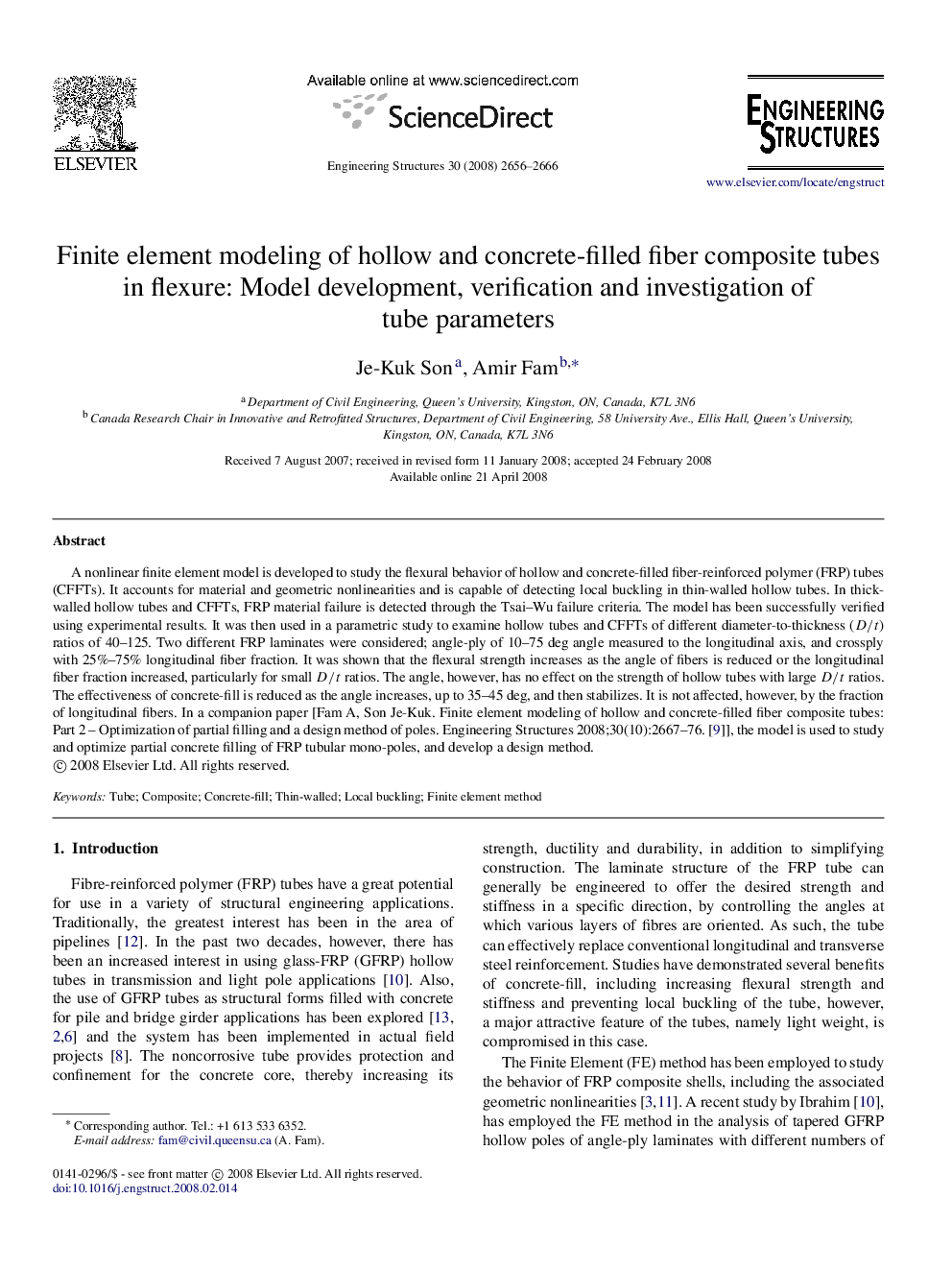| Article ID | Journal | Published Year | Pages | File Type |
|---|---|---|---|---|
| 268609 | Engineering Structures | 2008 | 11 Pages |
A nonlinear finite element model is developed to study the flexural behavior of hollow and concrete-filled fiber-reinforced polymer (FRP) tubes (CFFTs). It accounts for material and geometric nonlinearities and is capable of detecting local buckling in thin-walled hollow tubes. In thick-walled hollow tubes and CFFTs, FRP material failure is detected through the Tsai–Wu failure criteria. The model has been successfully verified using experimental results. It was then used in a parametric study to examine hollow tubes and CFFTs of different diameter-to-thickness (D/tD/t) ratios of 40–125. Two different FRP laminates were considered; angle-ply of 10–75 deg angle measured to the longitudinal axis, and crossply with 25%–75% longitudinal fiber fraction. It was shown that the flexural strength increases as the angle of fibers is reduced or the longitudinal fiber fraction increased, particularly for small D/tD/t ratios. The angle, however, has no effect on the strength of hollow tubes with large D/tD/t ratios. The effectiveness of concrete-fill is reduced as the angle increases, up to 35–45 deg, and then stabilizes. It is not affected, however, by the fraction of longitudinal fibers. In a companion paper [Fam A, Son Je-Kuk. Finite element modeling of hollow and concrete-filled fiber composite tubes: Part 2–Optimization of partial filling and a design method of poles. Engineering Structures 2008;30(10):2667–76. [9]], the model is used to study and optimize partial concrete filling of FRP tubular mono-poles, and develop a design method.
